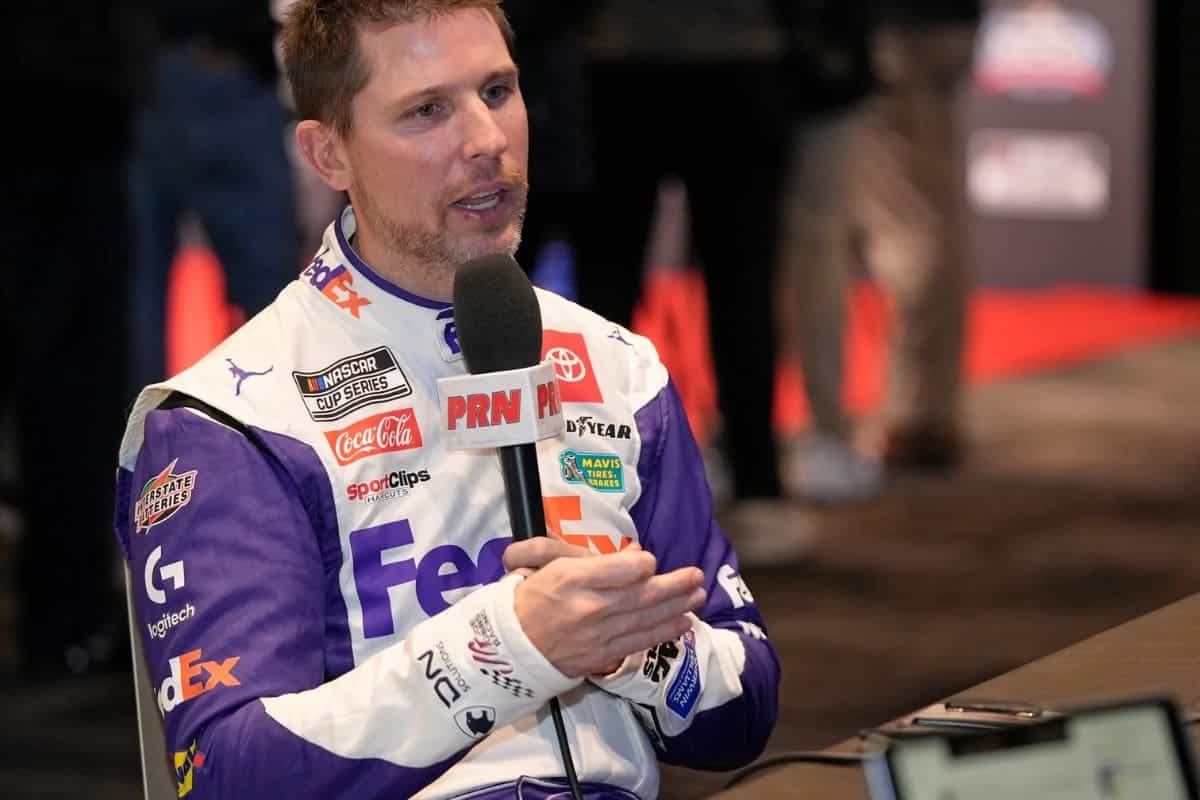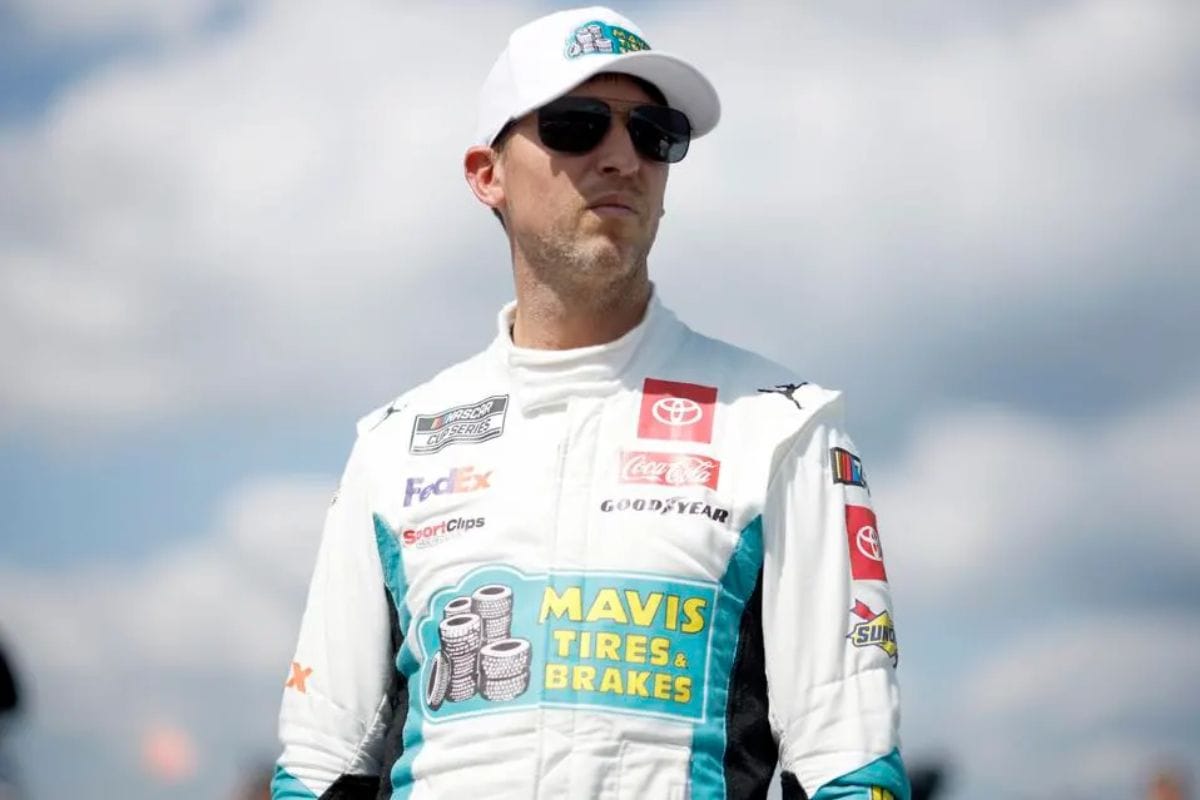Denny Hamlin Wins Pole at Richmond Raceway: Denny Hamlin‘s recent achievement of securing the pole position for the Cook Out 400 at Richmond Raceway highlights his skill as a driver and the tactical insight of Joe Gibbs Racing’s engineering team. With a standout lap time of 22.850 seconds, Hamlin exhibited a notable improvement that could influence race dynamics. This performance raises critical questions about the implications for both Hamlin’s championship aspirations and the competitive landscape of the upcoming race. As the anticipation builds, the focus shifts to how this pole position will translate into race strategy and outcomes.
Key Highlights
- Denny Hamlin clinched pole position for the Cook Out 400 with a lap time of 22.850 seconds at 118.162 mph.
- His tactical approach during qualifying allowed him to control race pace effectively against competitors.
- Martin Truex, Jr. secured the outside front row, showing strong team collaboration.
- Qualifying results are crucial for playoff standings, with Ty Gibbs and Ross Chastain positioned positively.
Denny Hamlin Secures Pole Position
Denny Hamlin secured the pole position for the Cook Out 400, showing his ability to excel under pressure during the NASCAR Cup Series qualifying at Richmond Raceway.
Hamlin’s performance was characterized by a decisive turnaround; after a cautious initial lap that merely secured his advancement to the next round, he exhibited tactical insight and precision driving on his subsequent attempt.
Behind the wheel of the No. 11 FedEx Cares Toyota Camry XSE, Hamlin delivered a blistering lap time of 22.850 seconds, equating to an impressive speed of 118.162 mph. This time secured him the pole and highlighted his status as a formidable competitor in the series.
The three-quarter-mile Richmond Raceway, known for its unique challenges, often tests drivers’ adaptability and skill, making Hamlin’s achievement even more remarkable.
Securing the pole position is a tactical advantage, as it allows Hamlin to control the race’s initial pace and defend against competitors.
Additionally, this achievement reflects the meticulous preparation and engineering excellence behind Joe Gibbs Racing, which continues to position itself at the forefront of NASCAR.
Qualifying Highlights and Team Performances
Hamlin’s impressive pole position performance set the stage for a highly competitive qualifying session, where the nuances of team strategies and individual driver capabilities were on full display.
His ability to improve his time by a mere 0.008 seconds from the initial round highlights the critical importance of precision and consistency in qualifying. This remarkable feat not only secured him the top spot but also showcased the disparities in performance among the other drivers.
Key highlights from the qualifying session include:
- Team Cohesion: Hamlin’s Joe Gibbs Racing teammate, Martin Truex, Jr., effectively positioned himself for a strong showing, starting from the outside of the front row. Their shared history of fierce competition adds an intriguing layer to the upcoming race.
- Performance Drop-off: Despite posting the fastest overall time in the initial round, Josh Berry struggled to replicate that success in the final round, landing a placement start. This highlights the volatility in racing, where initial speed does not guarantee sustained performance.
- Consistency Matters: Berry’s placement start marks his team’s fifth top-five finish of the year and fourth in the last seven races. This consistency signals a developing skill that could translate to future successes.
Collectively, these performances demonstrate the dynamic interplay between individual talent and team strategy in NASCAR qualifying, setting an exciting tone for the Cook Out 400 at Richmond Raceway.
Notable Qualifying Results
Highlighting the competitive nature of the qualifying session, several drivers delivered remarkable performances that set the stage for the Cook Out 400.
Importantly, Austin Dillon showed his skill by not only being the fastest in Saturday’s practice but also securing a sixth-place starting position, marking his best non-superspeedway qualifying result since the previous fall at Homestead. This momentum positions him as a formidable contender in the upcoming race.
Chris Buescher, the defending champion of Richmond’s Fall event, exhibited consistency by qualifying seventh, while Bubba Wallace, Joey Logano, and Tyler Reddick rounded out the top ten, indicating a strong showing from these drivers as they seek to capitalize on their starting positions.
Conversely, Ryan Blaney and Kyle Busch faced a narrow setback, both missing the final round of qualifying by the slightest margins. Blaney will start 11th, while the former champion Busch lines up 12th, both harboring ambitions to disrupt the frontrunners during the race.
Additional prominent qualifiers include William Byron (13th), Ty Gibbs (14th), and Kyle Larson (15th), who all failed to advance to the final round. Their starting positions will compel them to strategize effectively to navigate through the field.
Moreover, Brad Keselowski’s disappointing 29th position highlights the unpredictable nature of qualifying and the challenges inherent in securing competitive starting spots.
Playoff Implications and Final Qualifying Spots
As the Cook Out 400 approaches, the importance of qualifying positions intensifies, particularly for drivers jockeying for playoff spots in the NASCAR Cup Series. With the playoffs looming, every position gained or lost during qualifying can have profound implications on who will advance in the championship hunt.
Significantly, Ty Gibbs and Ross Chastain are both on the positive side of the cutline, qualifying 15th and 22nd respectively. Their performances will be vital as they face the pressure of maintaining their playoff statuses.
This weekend presents several key factors that could influence the playoff landscape:
- Points Positioning: Drivers like Gibbs and Chastain must optimize points not only for personal standings but also to fend off challengers lurking just outside the cutline.
- Debut Performance: Parker Retzlaff’s entry into the field with the No. 66 Ford Mustang adds an element of unpredictability. His performance could potentially disrupt established drivers, impacting their playoff ambitions.
- Track Dynamics: Richmond Raceway is known for its unique challenges, including tire wear and track position. Drivers who excel in these conditions can gain essential advantages that may determine their postseason fate.
With only a few races left before the playoffs, every qualifying performance will reverberate through the standings, making each lap in the Cook Out 400 a vital step toward championship aspirations. The stage is set for an exhilarating battle, highlighted by the stakes of playoff implications.
News in Brief: Denny Hamlin Wins Pole at Richmond Raceway
Denny Hamlin’s achievement of securing the pole position for the Cook Out 400 at Richmond Raceway emphasizes the significance of tactical execution and vehicle performance in motorsport.
This accomplishment not only reflects individual talent but also the collaborative efforts of Joe Gibbs Racing in optimizing race conditions.
As the competition intensifies, Hamlin’s pole position may provide an essential advantage, influencing the dynamics of the race and potential playoff standings for the upcoming events in the season.
ALSO READ: Denny Hamlin’s New FedEx Livery Sparks Outrage: Fans Call Latest Design ‘Boring’




